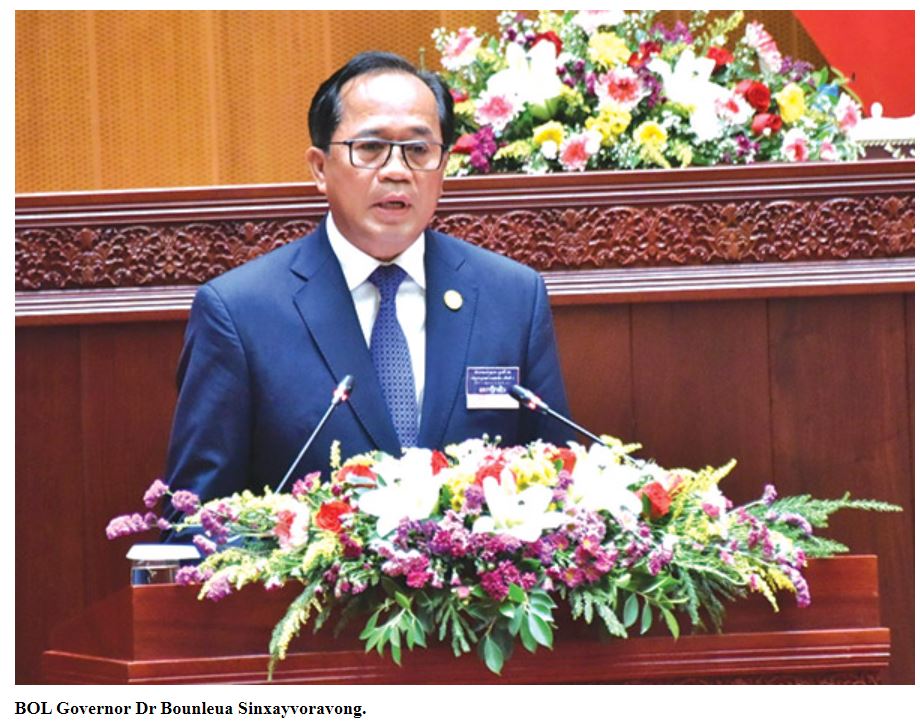Laos: BOL chief attributes foreign currency deficit to drop in loans, tourism
The governor of the central bank highlighted the root causes of the foreign currency shortage and outlined key measures to address them during debates at the National Assembly last week.
In response to questions raised by members of parliament, the Governor of the Bank of the Lao PDR, Dr Bounleua Sinxayvoravong, said Laos has faced a deficit in foreign currencies since 2010.
This means the inflow of foreign currencies is less than the outflow, creating an imbalance in foreign currency supply.
Dr Bounleua said that in the years immediately following 2010, the massive inflow of foreign investment capital and loans from foreign countries helped to balance the country’s income and expenditure and kept the deficit in check.
Unfortunately, since 2018, the government has restricted the amount of loans due to rising public debt, which has led to a shortfall in the overall balance of payments.
In addition, the Covid-19 pandemic which hit Laos in 2020 resulted in a massive loss of foreign currency due to the sharp decline in the number of foreign visitors and foreign investment, which are considered to be Laos’ main sources of foreign currency.
“In 2018 and 2019, tourism generated between US$900 million and US$1 billion each year,” Dr Bounleua said.
The central bank governor said the foreign currency lost from tourism and the drop in loans led to an overall foreign currency deficit because there was no corresponding decline in the demand for foreign currency.
“One of the best approaches is to reduce the foreign currency deficit by regulating foreign currencies earned from exports,” Dr Bounleua said.
At present, only just over 30 percent of export receipts enter Laos through the banking system.
In 2022, the value of exports stood at US$8.19 billion, but only US$2.7 billion entered the country.
For instance, in 2022, about US$2.2 billion was earned from the export of electricity but only US$500 million flowed into Laos.
This is because investors have been permitted to make payment of their debts in foreign countries as those investors borrowed money offshore to build dams in Laos.
With regard to the export of minerals, only 67 percent of export receipts entered the country.
“The most important thing is that we need to regulate the foreign currency earned from exports,” Dr Bounleua said.
“At the same time, we need to strongly promote foreign investment and tourism. If we can attract 4 million visitors annually, we will have about US$900 million or US$1 billion circulating in the country.”
He added that Laos also needs to limit imports of luxury and non-essential goods that require large amounts of foreign currency, while reducing the use of foreign currencies in the country.
The government may raise taxes on certain products as a means to restrict imports and reduce the use of foreign currencies.
Economists say it’s also critical for the government to consider a more favourable visa policy to attract more high spending tourists from Asia and Europe.
In addition, improving the investment climate, particularly by speeding up the approval of investment projects and introducing faster procedures for exporters, is necessary to attract foreign investment.
Source: https://www.vientianetimes.org.la/freeContent/FreeConten_Bol126.php


 English
English




